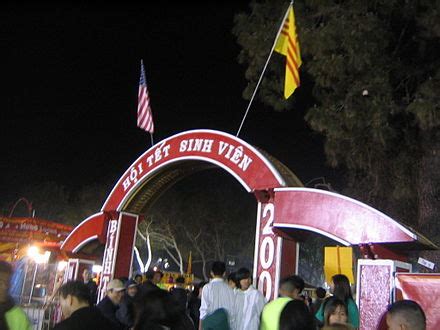
Little Saigon, Orange County – a small Vietnamese ethnic enclave nestled between Garden Grove and Westminster, home to the largest Vietnamese population outside of Vietnam. With almost 100,000 Vietnamese living within Little Saigon, making up over 40% of Little Saigon’s population, this neighborhood is an important cultural hub for Vietnamese immigrants. Unlike Little Tokyo, Koreatown, and both Chinatowns in LA and San Francisco, Little Saigon is nestled in suburban Orange County, with low density development and paltry public transit options–not exactly a hotspot for young adults to congregate in. It may not be as trendy as its other ethnic counterparts, but this isn’t the only thing that sets it apart; contrary to most Asian political voting patterns, Little Saigon has consistently been a Republican bastion along with the rest of Orange County–a trend that has been set ever since the first wave of migration following the fall of Saigon.
Little Saigon’s history coincides with the defeat of South Vietnam in the Vietnamese war in 1975. Around 50,000 refugees fled and were relocated to Camp Pendleton, Orange County, before migrating to Westminster where immigrants bought out cheap land in the hopes of creating a Vietnamese business district. From there, the seed for a new Saigon was planted, and the neighborhood slowly expanded over the next few decades, moving out into Garden Grove. There was some pushback from the local community, which was predominantly wealthy, White people, but the residents of Little Saigon were lucky to have avoided the massacres, exclusions, and destruction that the other ethnic enclaves historically faced. Nowadays, Little Saigon has a highly educated demographic with consistently growing businesses that outpace even the rest of Orange County, though its housing supply is unlikely to expand, similarly to the rest of Orange County.
Another trait Little Saigon shares with Orange County that separates it from other Asian enclaves is its tendency to vote Republican. This can be attributed to the vast majority of early immigrants being from South Vietnam, which fought against Communist North Vietnam in the Vietnam War. Republicans took advantage of this and sought to recruit the Vietnamese population to their side–Senator John McCain, a former POW in Vietnam, campaigned in Little Saigon to accomplish this task. In 2007, Vietnamese voters were 55% Republican and 22% Democratic, a trend that continues to this day, despite a shrinking gap. The political leanings are evident by the Hi-Tek incident, a series of protests against a TV store following the display of a Communist Vietnamese Flag and an image of Ho Chi Minh by Truong Van Tran, a storeowner. The protest lasted for almost two months, with demonstrators pressuring the storeowner to remove the flag, leading to physical violence where Truong was hit in the head and had to be hospitalized. The incident eventually concluded with the police discovering video piracy operations being conducted within his store, forcing his store to close and sentencing Truong to 5 years in prison. With this incident, Vietnamese residents have proven themselves to be a strong Republican voter base for the next few decades.
Today, Vietnamese voters are still majority Republican voters, as is most of Orange County, but just like Orange County, the gap in political representation is shrinking–Republican incumbent Michelle Steel in CA 45th district seems to be on track to potentially losing her seat in the 2024 House election to Vietnamese American Derek Tran. As younger generations lose the anti-communist fervor their progenitors had, we may see a closer political alignment between Vietnamese and other Asians in California.
(Photo Credit: DHN licensed under the Creative Commons Attribution-Share Alike 3.0 Unported License)








